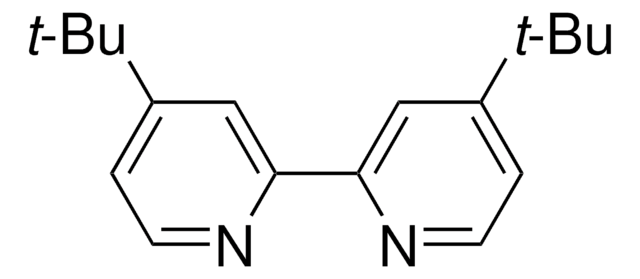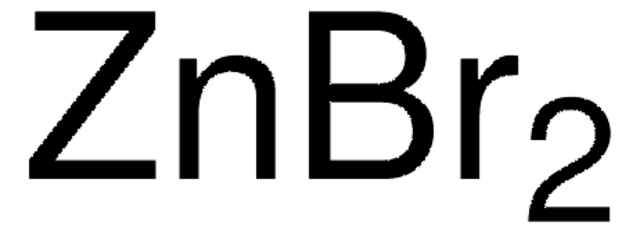746355
Zinkchlorid
anhydrous, free-flowing, Redi-Dri™, ACS reagent, ≥97%
Synonym(e):
Chlorzink
About This Item
Empfohlene Produkte
Qualität
ACS reagent
anhydrous
free-flowing
Qualitätsniveau
Dampfdruck
1 mmHg ( 428 °C)
Produktlinie
Redi-Dri™
Assay
≥97%
Form
powder, crystals or granules
Eignung der Reaktion
reagent type: catalyst
core: zinc
Verunreinigungen
Oxychloride, passes test
≤0.005% insolubles
pH-Wert
5 (20 °C, 100 g/L)
mp (Schmelzpunkt)
293 °C (lit.)
Anionenspuren
nitrate (NO3-): ≤0.003%
sulfate (SO42-): ≤0.01%
Kationenspuren
Ca: ≤0.06%
Fe: ≤0.001%
K: ≤0.02%
Mg: ≤0.01%
NH4+: ≤0.005%
Na: ≤0.05%
Pb: ≤0.005%
SMILES String
[Cl-].[Cl-].[Zn++]
InChI
1S/2ClH.Zn/h2*1H;/q;;+2/p-2
InChIKey
JIAARYAFYJHUJI-UHFFFAOYSA-L
Suchen Sie nach ähnlichen Produkten? Aufrufen Leitfaden zum Produktvergleich
Allgemeine Beschreibung
Anwendung
- A catalyst to synthesize 5-substituted 1H-tetrazoles by [3 + 2] cycloaddition reaction of organic nitriles with sodium azide.
- A reagent to promote the hydrolysis of NaBH4 for the generation of hydrogen.
- A reagent for the activation of carbon materials.
Rechtliche Hinweise
Signalwort
Danger
H-Sätze
Gefahreneinstufungen
Acute Tox. 4 Oral - Aquatic Acute 1 - Aquatic Chronic 1 - Eye Dam. 1 - Skin Corr. 1B - STOT SE 3
Zielorgane
Respiratory system
Lagerklassenschlüssel
8B - Non-combustible corrosive hazardous materials
WGK
WGK 3
Flammpunkt (°F)
Not applicable
Flammpunkt (°C)
Not applicable
Analysenzertifikate (COA)
Suchen Sie nach Analysenzertifikate (COA), indem Sie die Lot-/Chargennummer des Produkts eingeben. Lot- und Chargennummern sind auf dem Produktetikett hinter den Wörtern ‘Lot’ oder ‘Batch’ (Lot oder Charge) zu finden.
Besitzen Sie dieses Produkt bereits?
In der Dokumentenbibliothek finden Sie die Dokumentation zu den Produkten, die Sie kürzlich erworben haben.
Kunden haben sich ebenfalls angesehen
Unser Team von Wissenschaftlern verfügt über Erfahrung in allen Forschungsbereichen einschließlich Life Science, Materialwissenschaften, chemischer Synthese, Chromatographie, Analytik und vielen mehr..
Setzen Sie sich mit dem technischen Dienst in Verbindung.








